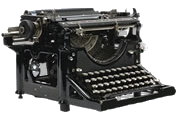A Pat on the Back for the GIs
(Coronet Magazine, 1945)
So they’ve given up.
They’re finally done in, and the rat is dead in an alley back of the the Wilhelmstrasse.
Take a Bow, GI – take a bow, little guy.
Far-flung ordinary men, unspectacular but free, rousing out of their habits and their homes – got up early one morning, flexed their muscles, learned the manual of arms (as amateurs) and set out across perilous oceans to whop the bejeepers out of the professionals.
And they did.
